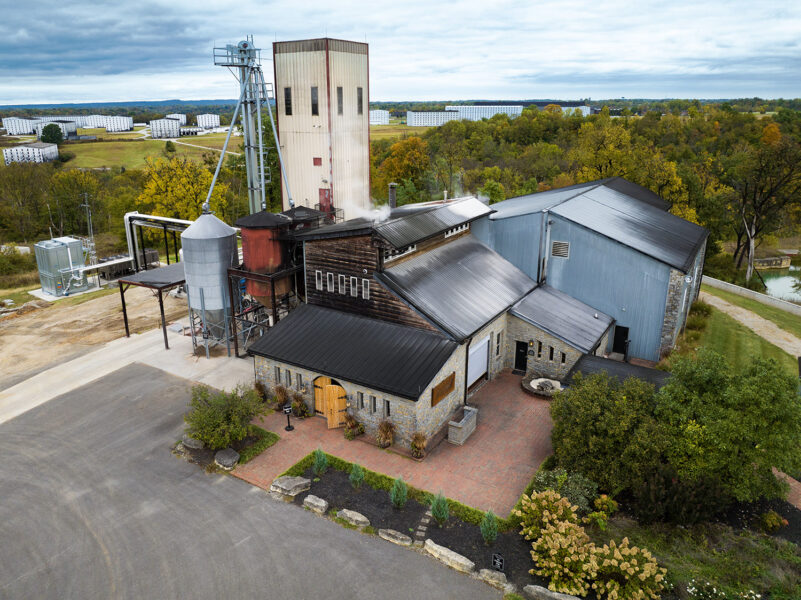Willett Distillery
A distillery as synonymous with American whiskey as its hometown of Bardstown, Kentucky, Willett boasts a long history of both distilling and independent bottling, and with the 2012 revitalization of the original estate, the Willett family’s fifth generation of producers has ushered in perhaps the brand’s most exciting era yet.
The Willett family’s role in American distilling is a long and well-documented one, finding its first Kentucky touchstone in 1792 when William Willett, Jr. moved from Maryland to Nelson County—the same year that Kentucky became a state. By the mid-1800s, his son John David Willett was a partner in Moore, Willett, & Frenke Distillery, and would serve as a master distiller at four other distilleries in his lifetime. Two generations of family distillers later, in 1936, Thompson Willett became the founder and president of Willett Distillery, which was erected on the family farm in Bardstown shortly after Prohibition’s repeal.
Willett Distillery launched Old Bardstown Bourbon in the 1940s, and the flagship brand was followed by Johnny Drum Bourbon in the 1960s. As the growing bourbon category solidified its place in America’s very identity, Willett Distillery collected accolades for the mash bill recipes still used by the family today.
Even Kulsveen and his wife, Martha Willett Kulsveen, took ownership of the property in 1984, just as American tastes for premium whiskey were on the decline. Though the distillery ceased production during this time (of both its whiskey and the ethanol it produced for gasoline in answer to the nation’s energy crisis of the decade prior), Even and Martha pushed on with the family legacy, changing the name of the distillery to Kentucky Bourbon Distillers Ltd and releasing the estate’s remaining stocks. Once the Willett rickhouses ran dry, the Kulsveen’s pivoted to sourcing whiskeys from other Kentucky distilleries, acquiring the best of bourbon’s surplus (at the time) supply. It was during this era, in the 1990s, that the family debuted its Small Batch Boutique Bourbon Collection under the KBD label, which included Rowan’s Creek, Noah’s Mill, Kentucky Vintage, and Pure Kentucky—all independently bottled and reflecting the sourcing of fine whiskey stocks that could never be obtained today.
In the early 2000s, Even and Martha’s son, Drew, joined the business, accompanying a new chapter in Willett’s story: The renaissance of America’s interest in well-made spirits and craft cocktails inspired a return to the family’s historical methods of production, and in 2012, after transitioning back to the Willett name, the distillery was reopened and distilling began on the family estate once again.
Today, Drew Kulsveen serves as Willett’s Master Distiller and Chief Operations Officer, and the Willett family, including Drew’s sister, Britt (Willett President and Chief Whiskey Officer), her husband, Hunter Chavanne, and Drew’s wife, Janelle, helm this heritage distillery, balancing legacy with the exciting developments seen in Willett’s current stage of evolution.
The distillery uses Kentucky grains whenever possible and distills from six mash bills in total: four bourbon and two rye. Water for both production and proofing is pulled from a limestone-filtered, spring-fed pond on the estate and sour mash fermentation takes place for three to five days in 10,000-gallon stainless steel vats using a proprietary yeast strain. The whiskeys are distilled on a combination of stills including a 60-foot high, 2-foot diameter column still made of copper and stainless steel, a patented copper doubler with a roughly 800-gallon capacity (original to the distillery’s 1936 establishment), and Willett’s showpiece, a Vendome copper pot still replicated from the distillery’s original, patented pot still designed by Thompson Willett himself. This pot still is the inspiration for Willett’s iconic Pot Still Reserve bottle, which was designed from the still’s original blueprints. The whiskey enters 53-gallon, char #4 barrels from Independent Stave Company’s Kentucky cooperage, and aging takes place in a combination of eight rickhouses on the estate, seven of which have a capacity of approximately 5,0000 barrels, including Rickhouse A, the first built at the distillery and renovated in 2011. The remaining warehouses were built between the 1930s and 1960s, save for a new addition built in 2020 that boasts a 25,000-barrel capacity. Some barrels have begun to be transferred to Willett’s new facility, which lies fifteen minutes away in Springfield, Kentucky, and is expected to become fully operational in Fall 2025. All whiskeys, except for Willett’s single barrel selections, are lightly filtered to remove sediment.
Willett’s core range of whiskeys, including the Pot Still Reserve and Estate Bottled Rye (both introduced in 2008 and originally composed of sourced whiskey), are now all distilled in-house, bottled at a minimum four years of age, and reflect the ever-evolving craftsmanship of the Willett family and team.




